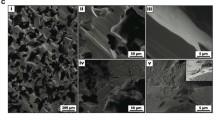Abstract
We have developed a method to organize cells in dissociated cultures using engineered chemical clues on a culture surface and determined their connectivity patterns. Although almost all elements of the synaptic transmission machinery can be studied separately in single cell models in dissociated cultures, the complex physiological interactions between these elements are usually lost. Thus, factors affecting synaptic transmission are generally studied in organotypic cultures, brain slices, or in vivo where the cellular architecture generally remains intact. However, by utilizing engineered neuronal networks complex phenomenon such as synaptic transmission or synaptic plasticity can be studied in a simple, functional, cell culture-based system. We have utilized self-assembled monolayers and photolithography to create the surface templates. Embryonic hippocampal cells, plated on the resultant patterns in serum-free medium, followed the surface clues and formed the engineered neuronal networks. Basic whole-cell patch-clamp electrophysiology was applied to characterize the synaptic connectivity in these engineered two-cell networks. The same technology has been used to pattern other cell types such as cardiomyocytes or skeletal muscle fibers.
Access this chapter
Tax calculation will be finalised at checkout
Purchases are for personal use only
Similar content being viewed by others
References
Bhadriraju K, Chen CS (2002) Engineering cellular microenvironments to cell-based drug testing. Drug Discov Today 7:612–620
Singhvi R, Kumar A, Lopez GP et al (1994) Engineering cell shape and function. Science 264:696–698
Chen CS, Mrksich M, Huang S et al (1998) Micropatterned surfaces for control of cell shape, position, and function. Biotechnol Prog 14:356–363
Natarajan A, Stancescu M, Dhir V et al (2011) Patterned Cardiomyocytes on microelectrode arrays as a functional, high information content drug screening platform. Biomaterials 32:4267–4274
Sung JH, Esch MB, Prot JM et al (2013) Microfabricated mammalian organ systems and their integration into models of whole animals and humans. Lab Chip 13:1201–1212
Schober A, Fernekorn H, Singh S et al (2013) Mimicking the biological world: methods for the 3D structuring of artificial cellular environments. Eng Life Sci 13:352–367
Ravenscroft MS, Bateman KE, Shaffer KM et al (1998) Developmental neurobiology implications from fabrication and analysis of hippocampal neuronal networks on patterned silane- modified surfaces. J Am Chem Soc 120:12169–12177
Stenger DA, Pike CJ, Hickman JJ et al (1993) Surface determinants of neuronal survival and growth on self- assembled monolayers in culture. Brain Res 630:136–147
Stenger DA, Hickman JJ, Bateman KE et al (1998) Microlithographic determination of axonal/dendritic polarity in cultured hippocampal neurons. J Neurosci Methods 82: 167–173
Edwards D, Stancescu M, Molnar P et al. (2013) Two cell circuits of oriented adult hippocampal neurons on self-assembled monolayers for use in the study of neuronal communication in a defined system. ACS Chem Neurosci 4: 1174–1182
Natarajan A, DeMarse TB, Molnar P et al (2013) Engineered in vitro feed-forward networks. J Biotechnol Biomater 3:153–160
Craig AM, Boudin H (2001) Molecular heterogeneity of central synapses: afferent and target regulation. Nat Neurosci 4:569–578
Paoletti P, Bellone C, Zhou Q (2013) NMDA receptor subunit diversity: impact on receptor properties, synaptic plasticity and disease. Nat Rev Neurosci 14:383–400
MacDermott AB, Role LW, Siegelbaum SA (1999) Presynaptic ionotropic receptors and the control of transmitter release. Annu Rev Neurosci 22:443–485
Zimmermann M (2001) Pathobiology of neuropathic pain. Eur J Pharmacol 429:23–37
Yamada KA (1998) Modulating excitatory synaptic neurotransmission: potential treatment for neurological disease? Neurobiol Dis 5:67–80
Albuquerque EX, Santos MD, Alkondon M et al (2001) Modulation of nicotinic receptor activity in the central nervous system: a novel approach to the treatment of Alzheimer disease. Alzheimer Dis Assoc Disord 15:S19–S25
Nistico R, Pignatelli M, Piccinin S et al (2012) Targeting synaptic dysfunction in Alzheimer’s disease therapy. Mol Neurobiol 46:572–587
Kang JF, Poeta M, Riedal L et al. (2004) Patterned neuronal networks for robotics, neurocomputing, toxin detection and rehabilitation. in 24th Army Conference. Orlando, FL
Schaffner AE, Barker JL, Stenger DA et al (1995) Investigation of the factors necessary for growth of hippocampal neurons in a defined system. J Neurosci Methods 62: 111–119
Kane RS, Takayama S, Ostuni E et al (1999) Patterning proteins and cells using soft lithography. Biomaterials 20:2363–2376
Hickman JJ, Bhatia SK, Quong JN et al (1994) Rational pattern design for in-vitro cellular networks using surface photochemistry. J Vac Sci Tech 12:607–616
Molnar P, Kang J-F, Bhargava N et al (2007) Synaptic connectivity in engineered neuronal networks. In: Patch clamp methods and protocols. Humana Press, Totowa, NJ, p 165–173
Acknowledgements
This work was supported by NIH Career Award K01 EB03465 and DOE grant DE-FG02-04ER46171.
Author information
Authors and Affiliations
Corresponding author
Editor information
Editors and Affiliations
Rights and permissions
Copyright information
© 2014 Springer Science+Business Media New York
About this protocol
Cite this protocol
Molnar, P., Kang, JF., Bhargava, N., Das, M., Hickman, J.J. (2014). Synaptic Connectivity in Engineered Neuronal Networks. In: Martina, M., Taverna, S. (eds) Patch-Clamp Methods and Protocols. Methods in Molecular Biology, vol 1183. Humana Press, New York, NY. https://doi.org/10.1007/978-1-4939-1096-0_15
Download citation
DOI: https://doi.org/10.1007/978-1-4939-1096-0_15
Published:
Publisher Name: Humana Press, New York, NY
Print ISBN: 978-1-4939-1095-3
Online ISBN: 978-1-4939-1096-0
eBook Packages: Springer Protocols




